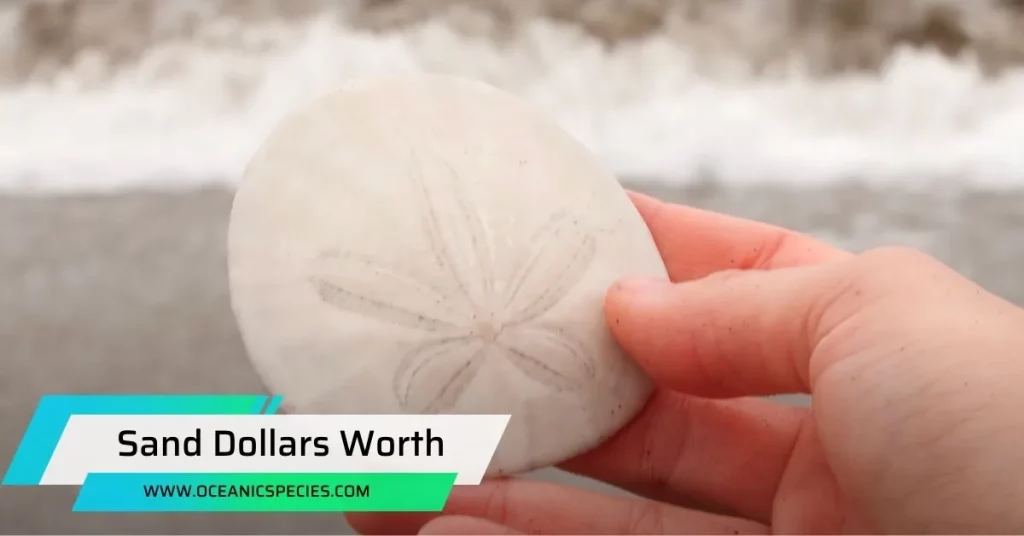Yes, you can eat barnacles raw, but it is not commonly done and not recommended. Barnacles are often used in dishes like ceviches after being shelled and thoroughly cleaned to remove any leftover grit from the shells.
They are typically eaten soon after being harvested, as they degrade quickly and freezing can damage their meat. While it is safe to eat barnacles, they must be properly cleaned and cooked to ensure safety, similar to crabs, lobsters, clams, and other shellfish.
The taste of barnacles is often described as seafood-like, with a slightly sweet and briny flavor.
What Are Barnacles?
Barnacles are small, hard-shelled crustaceans that belong to the class Cirripedia. They are found in marine environments all around the world, attaching themselves to various surfaces such as rocks, piers, and even the hulls of ships. Here are some key points about barnacles:
- Barnacles have a distinct appearance, with their calcareous shells that resemble miniature volcanoes.
- They are filter feeders, meaning they obtain their food by capturing particles from the water around them using their feathery appendages called cirri.
- Barnacles have a fascinating life cycle. They start off as free-swimming larvae, but once they find a suitable surface, they attach themselves permanently and undergo metamorphosis into their adult form.
The Different Types Of Barnacles
There are over 1,200 known species of barnacles, each with its own unique characteristics and adaptations. Here are some of the major types of barnacles:
- Acorn barnacles: These are the most common type of barnacles and have a conical-shaped shell resembling an acorn. They are often found in intertidal zones.

- Gooseneck barnacles: These barnacles have a distinctive flexible stalk, allowing them to flex and move with the waves. They are commonly found in rocky coastal areas.

- Stalked barnacles: As the name suggests, these barnacles have a long stalk that attaches them to solid surfaces such as rocks and shells. They are usually found in deeper waters.

Characteristics And Habitat Of Barnacles
Barnacles possess unique characteristics and have adapted to thrive in various habitats. Here are some notable features and habitats of barnacles:
- Shell structure: Barnacles have a hard, calcareous shell that protects their soft inner body. The shell is made up of six overlapping plates, providing them with ample defense against predators.
- Adhesive properties: Barnacles produce a strong adhesive substance that allows them to attach firmly to surfaces such as rocks and even the hulls of ships. This adhesive is one of the strongest known substances in the natural world.
- Intertidal habitats: Many species of barnacles can be found in intertidal zones, which are the areas that are exposed during low tide and submerged during high tide. They have evolved unique adaptations to withstand extreme conditions, such as exposure to air and changing salinity levels.
Are Barnacles Edible?
Barnacles can be eaten raw, commonly used in ceviches. However, it’s essential to clean and shell them thoroughly to avoid any leftover grit. While it is possible to eat barnacles raw, it is not recommended due to their unpleasant texture.
The Surprising Truth About Eating Barnacles:
Barnacles are a type of marine crustacean that are often found attached to rocks, ships, or even the bodies of whales.While not commonly consumed in many cultures, some people do eat barnacles and consider them a delicacy.
The taste and texture of barnacles are often compared to other seafood, such as lobster or crab. The most commonly consumed barnacle species is the gooseneck barnacle, also known as percebes.
Historical And Cultural Significance Of Consuming Barnacles:
Consuming barnacles has a long history, dating back to ancient times. In some cultures, such as Spain and Portugal, barnacles are highly valued and have been an important part of local cuisine for centuries. Barnacle harvesting traditions have been passed down through generations, with specialized techniques for gathering these delicacies from rocky shores or offshore locations.
Health Benefits And Nutritional Value Of Barnacles:
Barnacles are not only delicious but also packed with a variety of nutrients that can contribute to a healthy diet. They are an excellent source of protein, which is essential for muscle growth and repair. Barnacles are also rich in essential vitamins and minerals, including vitamin B12, iron, and zinc. Additionally, they contain omega-3 fatty acids, which promote heart health and can reduce inflammation in the body.
How To Prepare And Cook Barnacles

Barnacles can be eaten raw or cooked, and many restaurants incorporate them into dishes like ceviches. However, it’s crucial to properly shell and clean barnacles to avoid any unpleasant grit.
Cleaning And Shelling Barnacles:
- Start by removing any visible debris or seaweed from the barnacles.
- Rinse the barnacles under cold water to get rid of any remaining dirt or sand.
- Using a small brush or toothbrush, gently scrub the barnacles to clean them thoroughly.
- Carefully pry open the barnacles using a knife or a small tool, making sure not to damage the tender meat inside.
- Once the barnacles are open, remove the black, leathery skin covering the meat.
- Use your fingers or a small spoon to scoop out the meat from the barnacles.
- Rinse the meat again to remove any remaining impurities.
- Congratulations, you have successfully cleaned and shelled the barnacles!
Popular Recipes And Cooking Methods:

- Grilled Barnacles: Marinate the shelled barnacles in olive oil, garlic, lemon juice, and herbs of your choice. Grill them for a few minutes on each side until they are cooked through. Serve with a squeeze of fresh lemon juice.
- Steamed Barnacles: Place the shelled barnacles in a steamer basket and steam them for about 5-7 minutes until they are tender. Serve with melted butter or a dipping sauce of your choice.
- Barnacle Pasta: Cook your favorite pasta according to the package instructions. In a separate pan, sauté shelled barnacles with garlic, cherry tomatoes, and a splash of white wine. Mix the cooked pasta with the barnacle mixture and toss well. Serve with grated Parmesan cheese.
- Barnacle Ceviche: Combine shelled barnacles with diced onions, tomatoes, cilantro, lime juice, and a pinch of salt. Let the mixture marinate in the refrigerator for at least 30 minutes. Serve as a refreshing appetizer or a light snack.
Interesting Ways To Incorporate Barnacles In Dishes:

- Barnacle Tacos: Fill soft corn tortillas with grilled barnacles, shredded cabbage, avocado slices, and your favorite salsa or hot sauce. Enjoy a unique twist on traditional tacos.
- Barnacle Chowder: Add shelled barnacles to a creamy seafood chowder for an added taste and texture. Simmer the chowder with potatoes, onions, herbs, and fish stock. Serve hot with crusty bread.
- Barnacle Salad: Mix shelled barnacles with fresh greens, cherry tomatoes, cucumber slices, and a zesty vinaigrette dressing. Garnish with chopped herbs for a light and flavorful salad.
- Barnacle Tapas: Serve shelled barnacles as bite-sized appetizers on toothpicks or skewers. Pair them with other seafood, such as shrimp or scallops, and a variety of dipping sauces for a delightful tapas spread.
The Taste And Texture Of Barnacles
Barnacles are not your typical seafood, but they offer a unique taste and texture that can be quite intriguing. If you’re curious about the flavor profile of barnacles or want some tips on enhancing their taste, you’ve come to the right place.
In this section, we’ll explore the taste and texture of barnacles, compare them to other seafood, and provide some handy tips to make them even more delicious.
Describing The Flavor Profile Of Barnacles:
Barnacles have a distinct flavor that is often described as briny and oceanic. They offer a subtle sweetness along with a savory umami taste. Some people compare the flavor of barnacles to a combination of crab and lobster. The taste can vary depending on the species and where they are harvested, but overall, barnacles have a rich and complex flavor.
Comparing Barnacles To Other Seafood:
Unlike shrimps or fishes, barnacles have a firmer and chewier texture. They are similar in texture to mussels or clams, but with a more pronounced bite. Barnacles have a unique texture that adds interest to dishes and provides a satisfying mouthfeel. While they are often compared to seafood, it’s important to note that barnacles are actually crustaceans, not fish.
Tips For Enhancing The Taste Of Barnacles:
- To bring out the natural flavors of barnacles, try steaming or boiling them briefly. This will help to maintain their natural taste while ensuring they are cooked through.
- For added flavor, consider marinating the barnacles in a mixture of olive oil, garlic, lemon juice, and herbs before cooking.
- Barnacles pair well with citrus flavors, so squeeze some lemon juice over them before serving to enhance their taste.
- Experiment with different seasonings such as paprika, chili flakes, or herbs like thyme or parsley to add depth to the flavor of barnacles.
- Serve barnacles with a dipping sauce like aioli or a tangy vinaigrette to complement their taste and texture.
Responsible Harvesting And Sustainability
Barnacles can be eaten raw, especially in dishes like ceviches, but it’s important to clean them thoroughly to avoid any leftover grit from the shells. However, it is not commonly done and not recommended due to the texture, which can be unpleasant.
Sustainable Practices For Barnacle Harvesting:
Harvest barnacles from abundant populations to avoid impacting their overall population. Time the harvesting to ensure that it aligns with the barnacles’ reproductive cycles, allowing them to replenish naturally.
Use non-destructive methods, such as handpicking or scraping, to minimize damage to the barnacle colony. Avoid using heavy machinery or tools that may cause long-lasting harm to the barnacles and their habitat.
Adhere to size limits for harvesting, allowing smaller barnacles to reach maturity and reproduce.
Regulations And Guidelines For Collection:
Check local regulations and licenses required for barnacle harvesting in your area. Ensure that you are aware of any specific guidelines regarding the type and quantity of barnacles that can be collected.
Respect protected areas or reserves where barnacle harvesting may be prohibited to safeguard their populations. Follow any seasonal or temporary restrictions on barnacle collection to allow for natural regeneration.
Protecting Barnacle Populations For Future Generations:
Educate harvesters and the general public about the importance of sustainable barnacle harvesting and its impact on marine ecosystems. Encourage responsible harvesting practices through awareness campaigns and training programs.
Promote research and monitoring initiatives to better understand barnacle populations and their dynamics. Support the establishment of marine protected areas that safeguard barnacles and their habitats.
Collaborate with local communities, scientists, and government agencies to develop and enforce sustainable management plans.
Fun Facts And Trivia About Barnacles
While it is possible to eat barnacles raw, it is not commonly done and may not be recommended due to their texture.
Unique Trivia About Barnacles:
Barnacles are a type of marine crustacean that attach themselves to hard surfaces such as rocks, ship hulls, and even whales. There are over 1,200 different species of barnacles, ranging in size from a few millimeters to several centimeters.
Barnacles have a unique reproductive system, with the male and female organs being located in separate individuals. This means that barnacles can change sexes during their lifetime. Despite their appearance, barnacles are actually quite fascinating creatures. They have a complex feeding system that involves filtering water for tiny organisms and particles using their specialized appendages.
Barnacles are known for their incredible ability to withstand extreme conditions. They can survive in both freshwater and saltwater environments, as well as in areas with high levels of pollution and low oxygen levels.
Fascinating Facts From History And Literature:
In ancient times, barnacles were believed to be a type of shellfish that transformed into birds. This belief stems from the fact that barnacles were often found attached to driftwood and other floating objects, leading people to assume that they were somehow related to birds.
The idea that barnacles could transform into birds was so deeply ingrained in popular culture that it was even mentioned in the writings of renowned scholars such as Pliny the Elder and Aristotle.
In medieval Europe, barnacles were highly sought after because of their supposed resemblance to geese. They were considered a delicacy and were often served at royal banquets.
The belief that barnacles could give birth to birds persisted until the 17th century when naturalists like Robert Hooke and John Ray disproved this theory through careful observation and scientific study.
Unusual Uses Of Barnacles In Different Cultures:
In some cultures, barnacles are used for medicinal purposes. They are believed to have healing properties and are used to treat various ailments such as skin conditions, digestive disorders, and even respiratory problems.
In Japan, barnacles called “akazu” are used to make a traditional vinegar called “wanakazu.” This vinegar is often used in cooking and is highly valued for its unique flavor.
In certain coastal communities, barnacles are used as a natural food source. They are harvested and cooked in various ways, such as boiling or grilling, and are enjoyed as a tasty seafood delicacy.
In addition to their culinary uses, barnacles have also been used for decorative purposes. In some cultures, they are collected and used to create unique pieces of jewelry or incorporated into art and crafts.
Frequently Asked Questions
Q: Can You Eat Barnacles Raw?
A: Yes, you can eat barnacles raw. Many restaurants use raw barnacle meat in ceviches. However, it’s important to ensure you’ve shelled and thoroughly cleaned the barnacles to remove any leftover grit.
Q: How Can You Eat Gooseneck Barnacles?
A: Gooseneck barnacles are typically eaten soon after harvest, as they degrade quickly. Freezing usually damages their meat, so it’s best to consume them fresh.
Q: Is It Safe To Eat Barnacles?
A: Yes, it is safe to eat barnacles. However, like crabs, lobsters, clams, and shellfish, they must be cleaned and cooked properly to ensure safety.
Q: Are There Any Ways To Prepare Gooseneck Barnacles?
A: To prepare gooseneck barnacles, you can blanch them or cook them in various recipes. Cutting and slicing the barnacle before serving is also common.
Q: Can You Eat Barnacles Like Other Shellfish?
A: Yes, you can eat barnacles like other shellfish. They can be cooked in different ways, such as boiling, steaming, or grilling, depending on personal preference.
Conclusion
N beings can eat barnacles. They can be consumed raw or cooked, and are sometimes used in dishes like ceviches. However, it is important to ensure that the barnacles have been properly cleaned and shelled to avoid any unpleasant grittiness.
Barnacles, like crabs, lobsters, clams, and other shellfish, must be cleaned and cooked to be safe for consumption. While it is possible to eat barnacles raw, it is not commonly done and not recommended due to their texture. Gooseneck barnacles, in particular, are best eaten soon after harvest as they tend to degrade quickly.
Freezing can also damage the meat of barnacles. So, if you’re curious about trying something unique and unexpected, go ahead and give barnacles a try! Just make sure to prepare them properly for a safe and enjoyable culinary experience.



